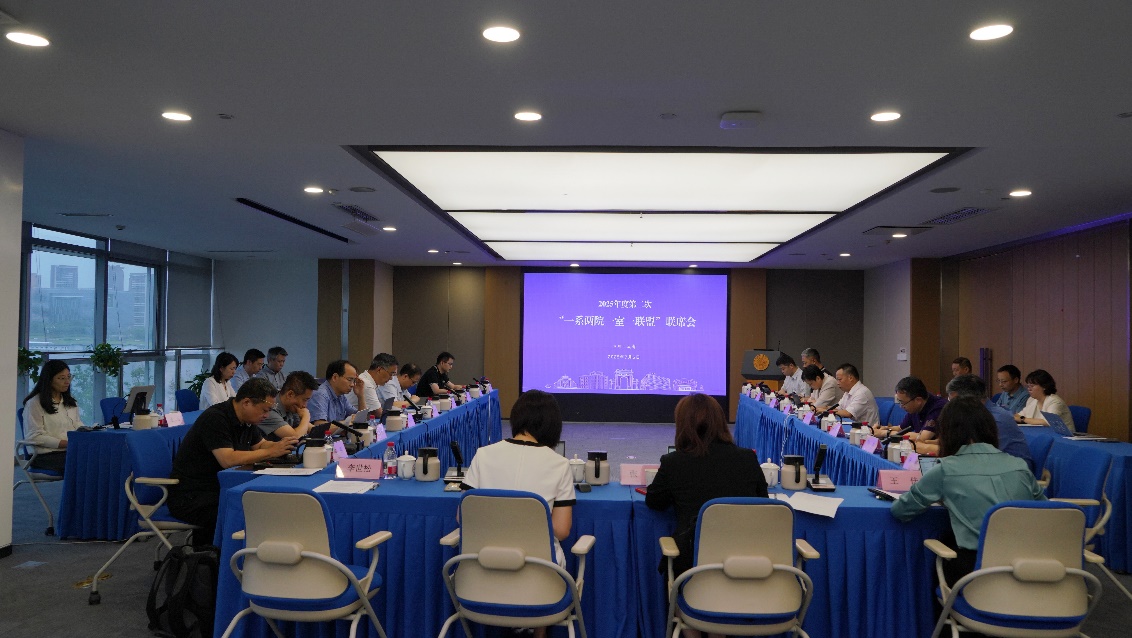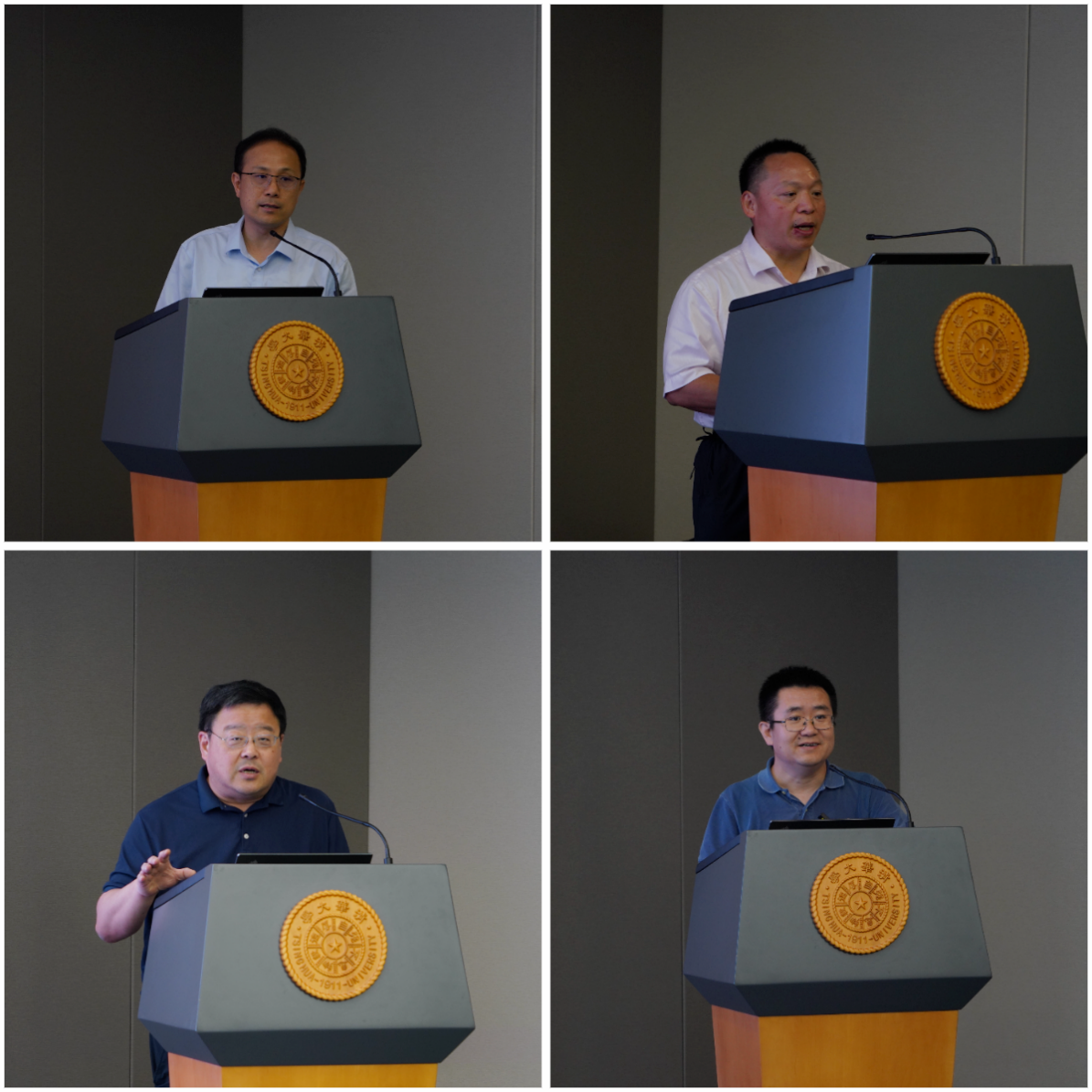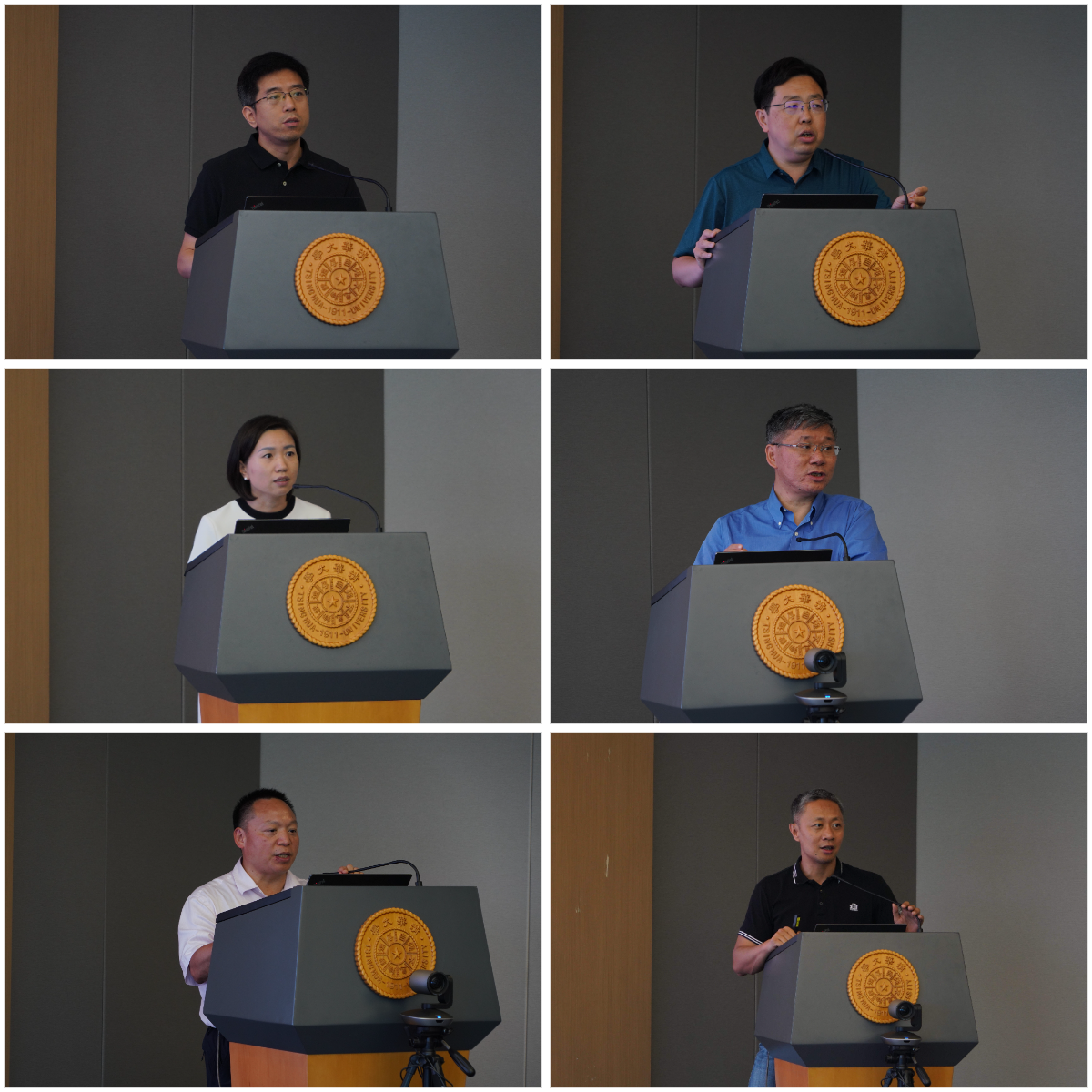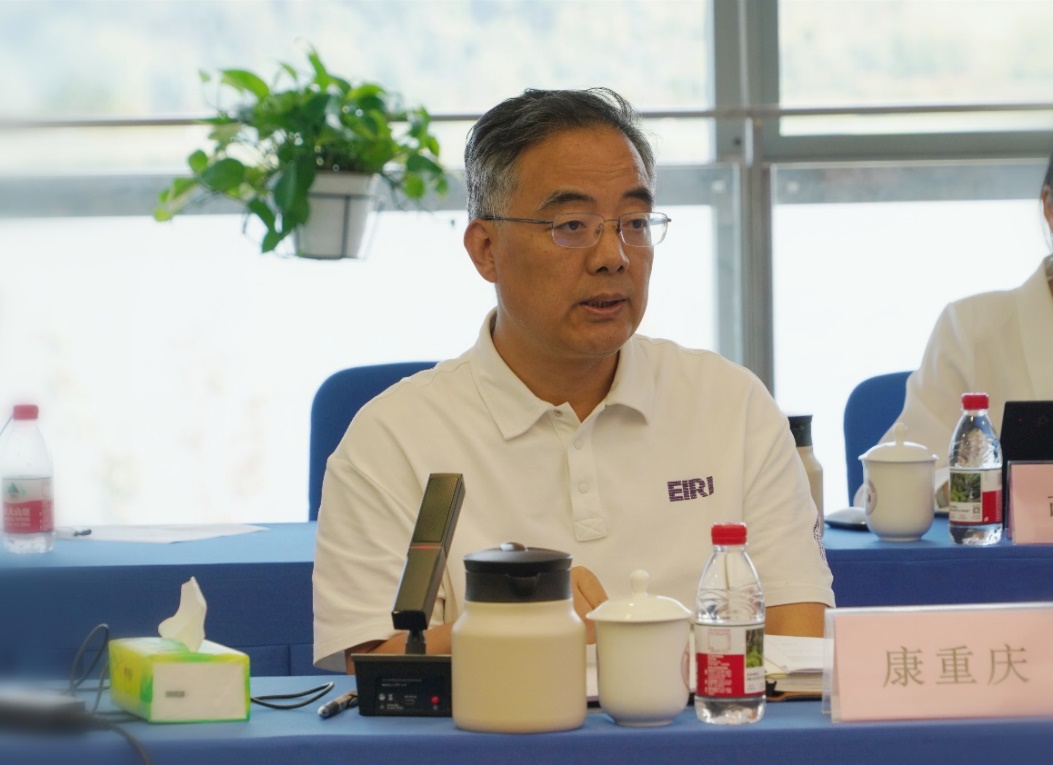On July 5, 2025, Tsinghua University Department of Electrical Engineering, Energy Internet Research Institute, Tsinghua University (hereafter "Beijing Institute"), Sichuan Energy Internet Research Institute Tsinghua University (hereafter "Sichuan Institute"), National Key Laboratory of Power System Operation and Control (hereafter "State Key Power Lab"), and the National Energy Internet Industry and Technology Innovation Alliance (hereafter "Alliance") convened the second 2025 joint meeting of "One Department, Two Institutes, One Laboratory and One Alliance" at Xinglong Lake in Sichuan Tianfu New Area.

At the meeting, the Tsinghua Department of Electrical Engineering, Beijing Research Institute, Sichuan Research Institute, State Key Laboratory of Power Systems, and National Energy Internet Alliance presented reports on their first-half 2025 progress and second-half work plans. The session also conveyed key directives from university meetings, highlighting critical updates regarding work style enhancement, disciplinary development priorities, internal control mechanism optimization, and talent cultivation initiatives.

The thematic discussion session centered on current development priorities and strategic deployment through a blended format of keynote presentations and collective deliberation. Discussions thoroughly explored seven critical areas: integration of Tsinghua EE Department's AI Action Plan with cross-institute coordination among the Beijing and Sichuan Research Institutes and Huairou Laboratory; implementation of a five-pronged framework for advancing high-caliber international collaboration; development strategies for the Energy Internet Think Tank Center; key considerations regarding State Key Laboratory development; preliminary 15th Five-Year Plan preparations for Sichuan Research Institute addressing emerging strategic challenges; financial management optimization approaches; and deepened industry-academia-research integration to accelerate technology commercialization. Participants engaged in candid exchanges grounded in practical experience, generating numerous actionable recommendations that significantly advanced refinement and implementation of these initiatives.

In his concluding remarks, Kang Chongqing acknowledged the significant progress achieved by each unit within the "One Department, Two Institutes, One Laboratory, and One Alliance" framework, highlighting their effective collaborative momentum. Looking ahead, he outlined three strategic recommendations: First, fully implementing university directives to capitalize on transformative opportunities like artificial intelligence in service of institutional priorities; second, strengthening the five-pronged collaborative framework through enhanced coordination in project organization, technology commercialization, and talent development to amplify systemic synergy; third, systematically advancing long-term planning aligned with national strategies including carbon peaking by 2030 and 2035 vision goals, with focused efforts on formulating the 15th Five-Year Plan to establish solid foundations for future development. He emphasized the imperative for the consortium to effectively leverage its integrated advantages to propel collective advancement to new heights.

The meeting forged consensus and defined actionable measures regarding key initiatives, collaborative mechanisms, and resource integration, significantly strengthening the coordination framework among the "One Department, Two Institutes, One Laboratory, and One Alliance" consortium. This advancement provides substantial support for elevating the five-pronged collaborative system to heightened levels of sophistication and depth.
